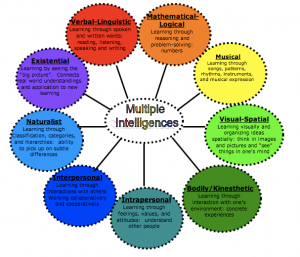By Ed Garrett, PsyD, CC-AASP
Assistant Professor, Belhaven University
Are your student’s still breathing? Have you checked their pulse? If you are like most adult learner professors, teaching at that bewitching hour of 6pm to 10pm, then you have seen the blank stares late into the class. The average professor accepts this as just par for the course, but for those professors that want to take their learning to the next level they must find ways to bring life to their class.
Recently, I presented a follow-up webinar (WATCH HERE) to my campus presentation on how to engage our students through applied learning. The presentation was not groundbreaking, but began a dialog as to how one brings learning to life. It’s one thing to read the book, it’s another thing to make the learning pop off the page. Through some simple ideas I wanted those in attendance to take a few nuggets of knowledge away from the presentation that could change the learning experience for their students. There were three keys ideas presented, so I welcome you to take away from this article what you feel might bring life to your class.
We all learn differently: Howard Gardner identified seven distinct intelligences. This theory has emerged from recent cognitive research and “documents the extent to which students possess different kinds of minds and therefore learn, remember, perform, and understand in different ways,” according to Gardner (1991).
Gardner (1991) says that these differences “challenge an educational system that assumes that everyone can learn the same materials in the same way and that a uniform, universal measure suffices to test student learning” (p.2).
This being the case a professor needs to understand each learning style and how to apply as much as you can help your students learn. Here are the different learning styles discussed by Gardner (1991):
Running without thinking about running: When you were young and in class you went to recess because you wanted to play. Little time was spent by you realizing that you might be exercising. The same concept can be applied to your teaching. How can you engage your students in learning without them knowing they are learning?
One example of this would be playing Jeopardy as a pre-final check for understanding activity. In my class I put students in groups and have them spend time research and review past definitions. Once time is up I explain that we are going to play Jeopardy for a small amount of bonus points. The students have a blast and spend little time thinking about learning due to the rush of competition. By the end of the review, the students have displayed a vast amount of knowledge that simply looking through a book might not have brought. On top of that, the students have been active and had fun.
I encourage you to look up https://jeopardylabs.com for a great, inexpensive way to bring Jeopardy into your classroom. This small investment will bring big returns with your students.
Walk-Throughs: As a former adult learner of night courses I give credit to my past professors for this idea. When integrating presentations or selecting topics for teams, utilize a pre-activity to help them move. I simply use 3M sticky-backed poster sheets. I have several topics that the teams must explore. I write each term on a separate sheet and post them individually all around the room. I then have each student, collectively, walk around the room and answer a question related to the topic. I may ask students to provide their definition of each word posted. I then can assign each team to a poster and have them present, as the leading expert, on that topic related to classwork. The students are up, active, and engaging – everything we want in learning when we reach the late hours.
Honorable Mentions:
- I’ll use a deck of playing cards to organize groups/teams by suite.
- Incorporate as many team building or leadership building activities. This can get the students up and moving and bring life to learning.
I know sometimes those hours can be long, but with a little effort and creativity, things can change. There are so many incredible things that can be done to bring life to your classroom. It may take a little money to bring some of these ideas to life, but it’s a small investment to help produce a large change. As someone who incorporates all of these on a regular basis, the joy comes when I hear my students say, “Thanks for making learning real.” I double-dog dare you…bring life to your teaching and see what fruit grows. You’re students will thank you.
Reference:
Gardner, H. (1991) The unschooled mind: how children think and how schools should teach. New York: Basic Books Inc.

One thought on “Bring life to your class: More than a case study”
Thanks for the post, Ed–great insight!
Everett Wade